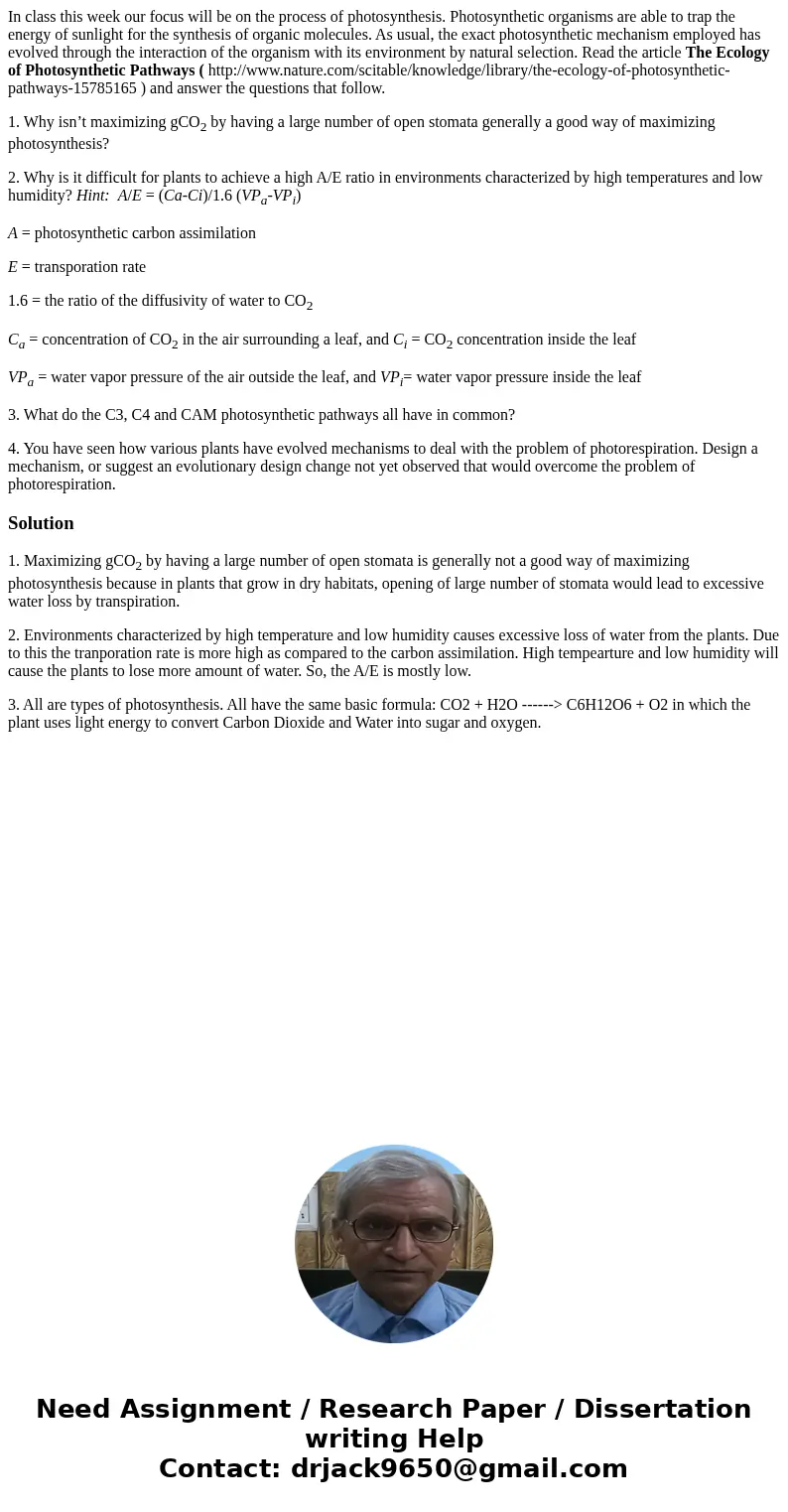In class this week our focus will be on the process of photo
In class this week our focus will be on the process of photosynthesis. Photosynthetic organisms are able to trap the energy of sunlight for the synthesis of organic molecules. As usual, the exact photosynthetic mechanism employed has evolved through the interaction of the organism with its environment by natural selection. Read the article The Ecology of Photosynthetic Pathways ( http://www.nature.com/scitable/knowledge/library/the-ecology-of-photosynthetic-pathways-15785165 ) and answer the questions that follow.
1. Why isn’t maximizing gCO2 by having a large number of open stomata generally a good way of maximizing photosynthesis?
2. Why is it difficult for plants to achieve a high A/E ratio in environments characterized by high temperatures and low humidity? Hint: A/E = (Ca-Ci)/1.6 (VPa-VPi)
A = photosynthetic carbon assimilation
E = transporation rate
1.6 = the ratio of the diffusivity of water to CO2
Ca = concentration of CO2 in the air surrounding a leaf, and Ci = CO2 concentration inside the leaf
VPa = water vapor pressure of the air outside the leaf, and VPi= water vapor pressure inside the leaf
3. What do the C3, C4 and CAM photosynthetic pathways all have in common?
4. You have seen how various plants have evolved mechanisms to deal with the problem of photorespiration. Design a mechanism, or suggest an evolutionary design change not yet observed that would overcome the problem of photorespiration.
Solution
1. Maximizing gCO2 by having a large number of open stomata is generally not a good way of maximizing photosynthesis because in plants that grow in dry habitats, opening of large number of stomata would lead to excessive water loss by transpiration.
2. Environments characterized by high temperature and low humidity causes excessive loss of water from the plants. Due to this the tranporation rate is more high as compared to the carbon assimilation. High tempearture and low humidity will cause the plants to lose more amount of water. So, the A/E is mostly low.
3. All are types of photosynthesis. All have the same basic formula: CO2 + H2O ------> C6H12O6 + O2 in which the plant uses light energy to convert Carbon Dioxide and Water into sugar and oxygen.

 Homework Sourse
Homework Sourse